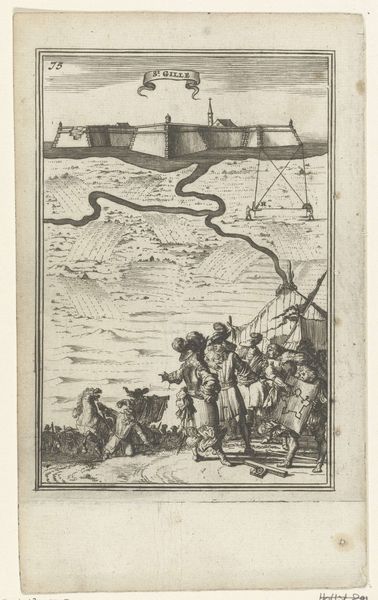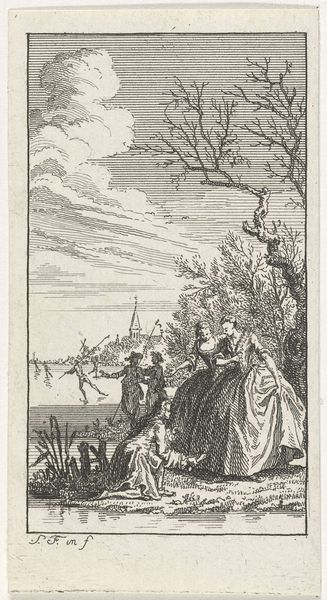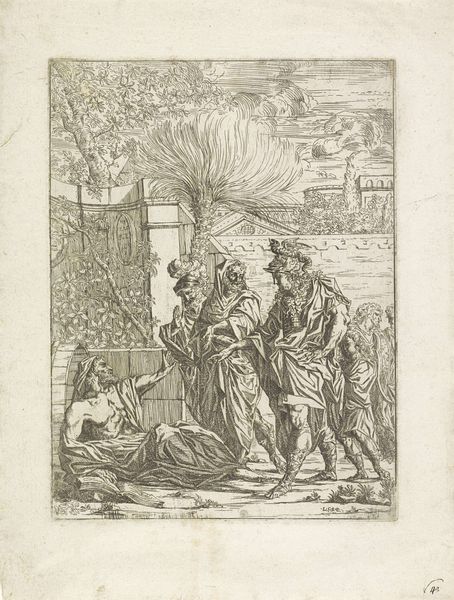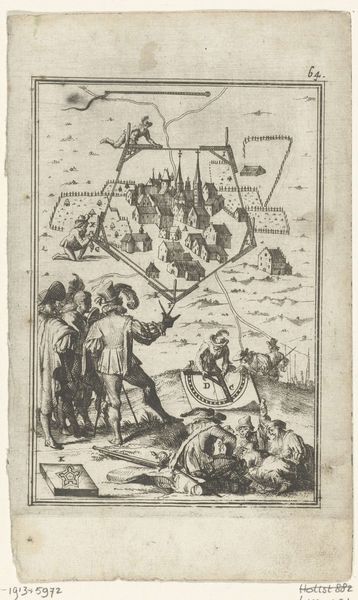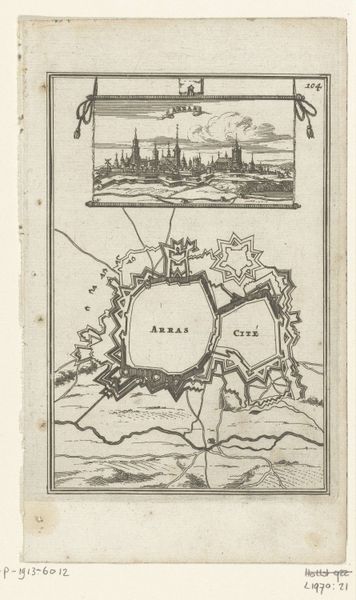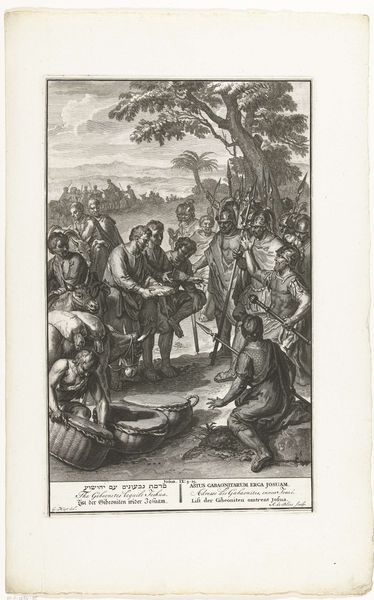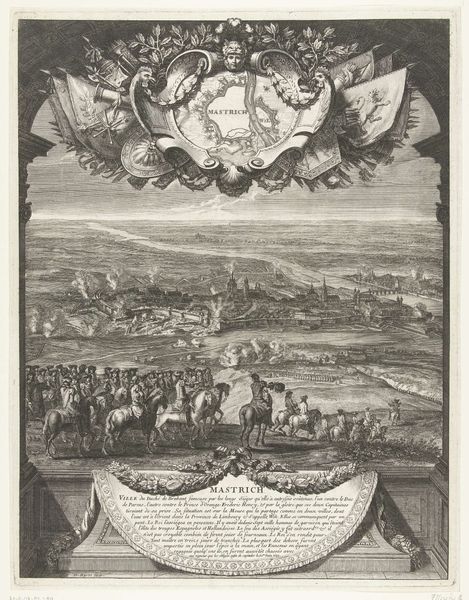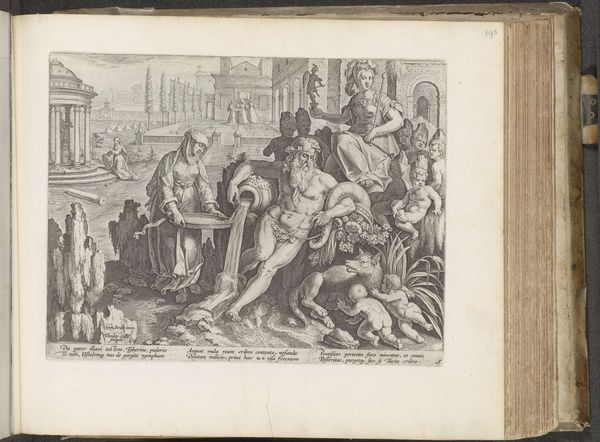
Illustratie voor 'Den Arbeid van Mars' van Allain Manesson Mallet 1672
0:00
0:00
print, etching, engraving
#
baroque
# print
#
pen sketch
#
etching
#
old engraving style
#
landscape
#
history-painting
#
engraving
Dimensions: height 185 mm, width 111 mm
Copyright: Rijks Museum: Open Domain
Curator: What an intriguing scene. My initial response is to see a certain geometric division; a horizon line sharply splitting the upper townscape and the activity on the lower portion. Editor: Indeed. What you're observing is "Illustratie voor 'Den Arbeid van Mars' van Allain Manesson Mallet," created by Romeyn de Hooghe in 1672. This engraving and etching on paper resides here at the Rijksmuseum. The combination of techniques results in striking textures and varied line weights, reflecting both detail and a sense of depth. Curator: And the materiality… Look at how the etched lines create areas of dense shadow and light, a kind of binary visual language to direct our sight through the composition. Note especially how this lends itself to emphasize the attire of figures around the table—ostensibly military leaders, one of whom is pointing. Editor: Absolutely. Considering its social context, engravings like this were vital means of disseminating information, functioning almost like journalistic photography of their time. The etching suggests reproduction; the democratization of images which had previously been restricted by the means of their production. Who had access to this knowledge, and in what conditions was it consumed? Curator: The town in the distance lends itself as a strategic objective, maybe? What does it mean to stage military actions alongside those governing decisions in the foreground, the way lines are oriented on the water… it directs the viewers eye. This seems to be about planning conflict as a deliberate act. Editor: Precisely. Consider how this print served the purpose of informing and perhaps shaping public opinion about military matters. The level of detail suggests the engraver wanted a wide dissemination; who was meant to take part in the militarization of everyday society. Curator: Focusing purely on form, it seems so efficient; nothing extra, everything has intent, everything leads to a logical deduction, what to emphasize... Very convincing visual logic. Editor: Ultimately, this piece makes us reflect upon the intersection of labor, military, and social influence through artmaking in the 17th century. Curator: And for me, how effective arrangement and the calculated distribution of values contributes to that effect and enhances symbolic dimension to the artwork.
Comments
No comments
Be the first to comment and join the conversation on the ultimate creative platform.
